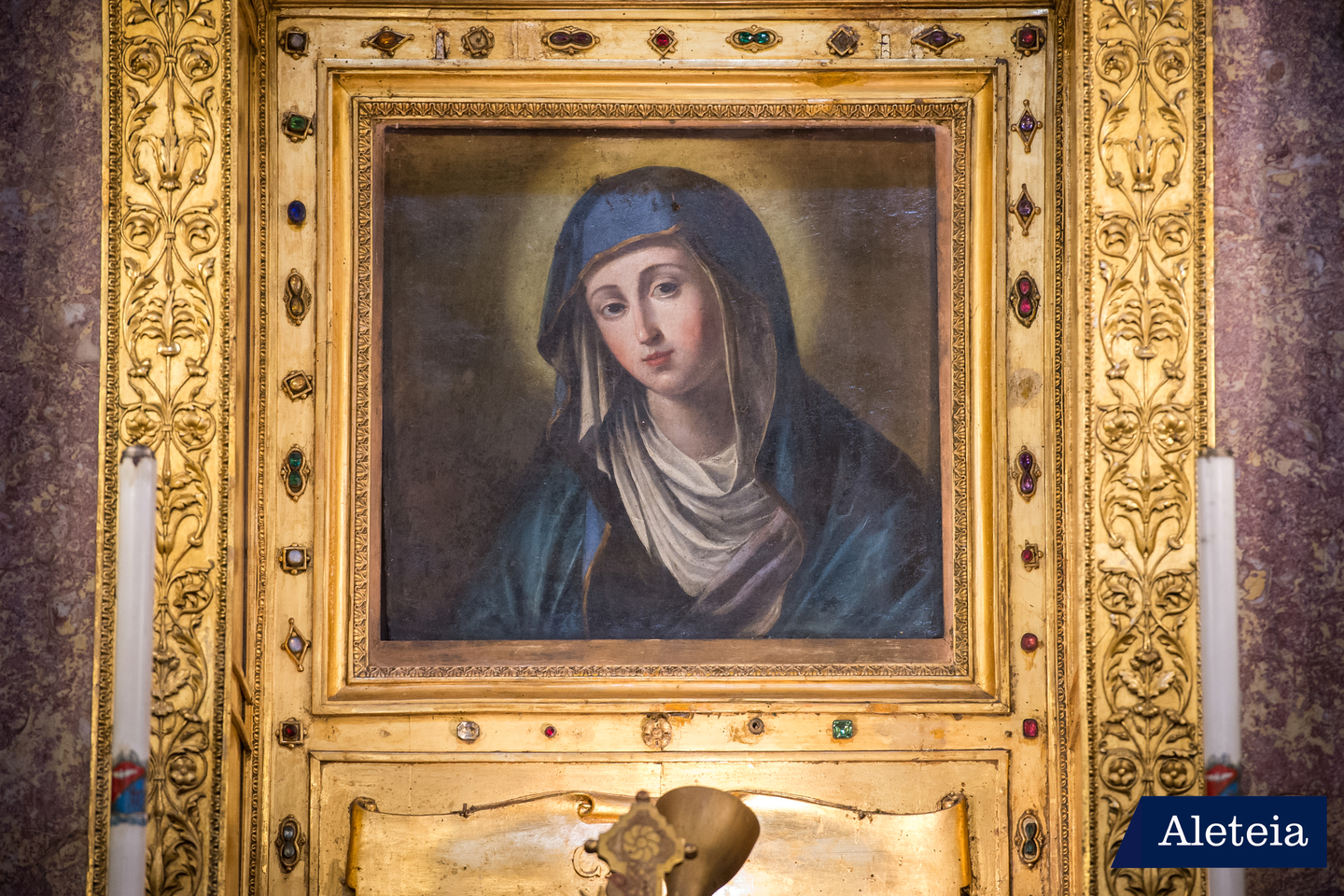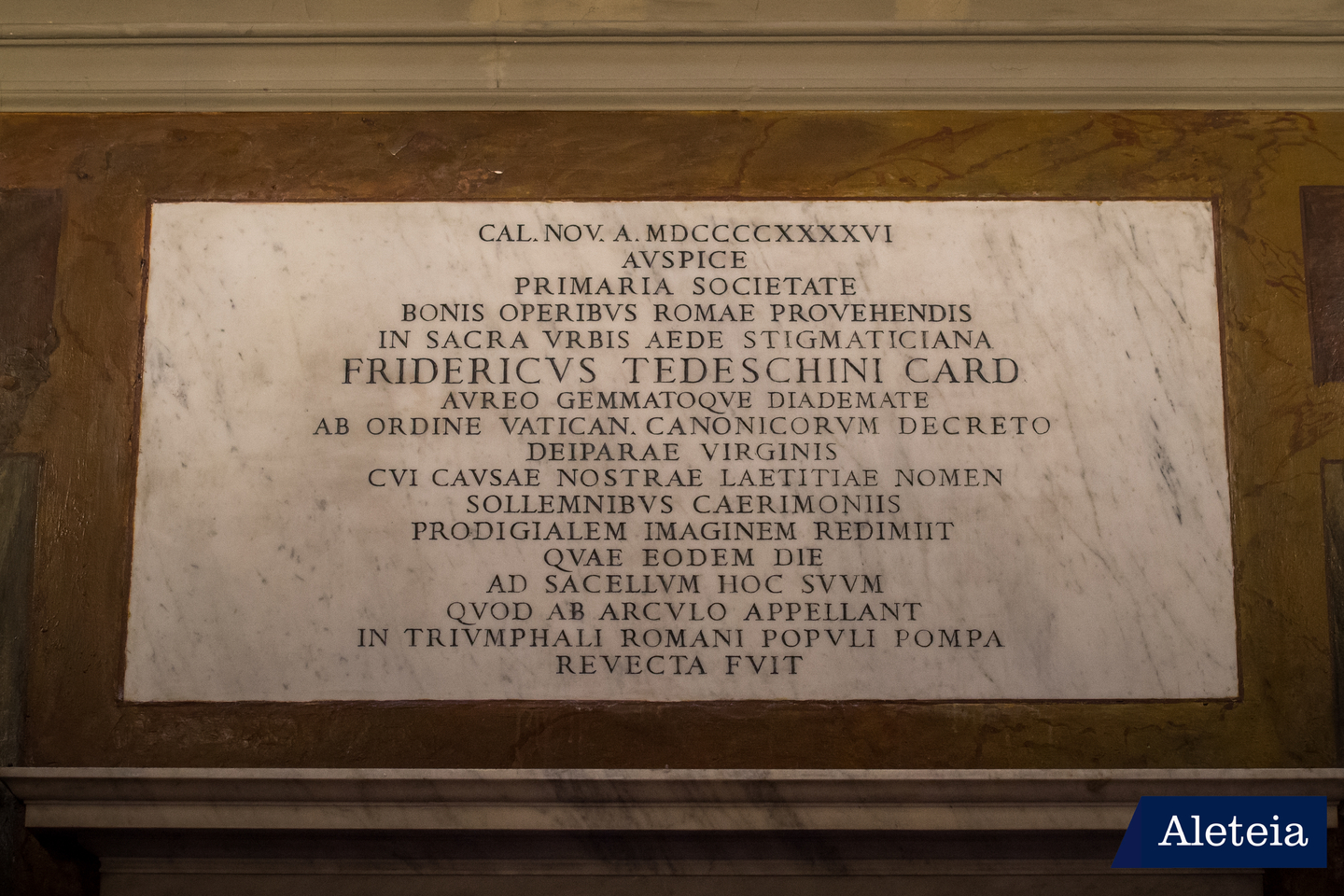On our tour of the Madonnelle, we hear today the interesting history of the Madonna of the Arch.
Lenten Campaign 2025
This content is free of charge, as are all our articles.
Support us with a donation that is tax-deductible and enable us to continue to reach millions of readers.
We continue with our daily tour this month through a particular artistic expression of Marian devotion: Rome’s “Madonnelle” (“little Madonnas”). These are images of Mary—some of them miraculous—scattered throughout the streets and alleyways of the city. They are the object of much popular devotion. Follow the series here: Little Madonnas of Rome
Madonna of the Arch: via S. Marcello
It’s the smallest Marian shrine in Rome. It’s found halfway between Piazza Venezia and the Trevi Fountain, in a narrow and obscure alleyway. Here is venerated a miraculous image of the Virgin, under the title of “Cause of Our Hope,” but known to the Roman people as “Madonna of the Arch.” That is due to the original location, under the arch that united two buildings in the alley that joined Via S. Marcello with Piazza della Pilotta. The image was painted in 1690 by Domenico Maria Muratori, a painter from Bologna who was a student of Carracci. It was commissioned by Alessandra Mellini of the family of the Counts of Muti Papazzurri Savorelli, and was exposed for public veneration in the alley next to the family palace.

The work is an oil painting on a stone measuring 58×55 centimeters (close to 2 ft by 2 ft), weighing nearly 40 kilograms (90 lbs). On July 9, 1796, and for several days afterwards, the image miraculously moved its eyes, a phenomenon observed by numerous witnesses throughout the following days. This fact was also confirmed by a canonical process by ecclesiastical authorities (the same has happened with 25 other “little Madonnas”), and the place became a site of pilgrimages and devotions. At the time, the Pontifical State was threatened by the armies of France, and the miraculous event was interpreted as a bad sign, confirmed nearly two years later when Rome was, in fact, captured by Napoleon’s troops.

With the passing of the years, the little street was closed with gates in order to protect the image and the “ex voto” tokens, until, towards the end of the 19th century, the family of the Counts of Muti Papazzurri Savorelli commissioned the Roman architect Virginio Vespignani to construct a small shrine. The narrowness of the space notwithstanding, Vespignani managed to build a true architectonic jewel, which was inaugurated on September 8, 1850, and was enlarged the following year. The alley was thus closed off on one end, and the new building constitutes, since then, the smallest Marian shrine in Rome. The miraculous image—crowned in 1946—is kept over the main altar, inside a wooden niche covered with pure gold.
The shrine, declared a national artistic monument, has been entrusted to the “First Catholic Association Promoting Good Works,” for both upkeep and for use as a place of worship. This organization is one of the first Roman lay Catholic associations, constituted in 1870, and it is still active today in the areas of culture, formation, and charity. Among its past presidents is numbered a lawyer named Filippo Pacelli, whose son would eventually become Pope Pius XII. The Shrine is opened every day at 6:30 p.m. for the praying of the Rosary; Mass is celebrated on feast days at 7 p.m.
~
Follow the series here: Little Madonnas of Rome
See more articles like this at Aleteia’s Art & Travel section.








